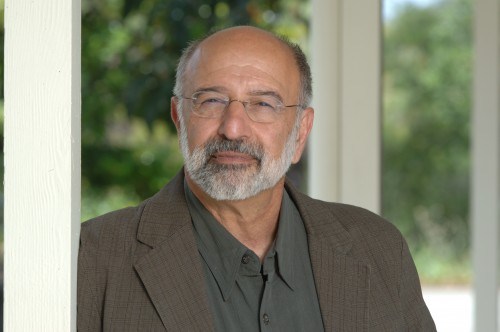Overview
This joint Religious Studies Project/SSSR session was a symposium that included four presentations, all focused on some variation on the topic of “religious experiences,” a category better described as experiences deemed religious (EDRs; Taves, 2009). Beyond that idea in the symposium summary, the only similarity among the presentations was that that they were almost purely descriptive. There was little if any theoretical synthesis, either psychologically or sociologically, to help the audience gain a conceptual understanding of the processes mediating these or other EDRs.
The combined result of the four presentations is certainly positive for purposes of illustrating ways that qualitative or quantitative research on EDRs can be executed. Three of the four presentations also gave the viewer-listener a relatively vivid picture of the questions posed, the participants involved, and what was actually learned from the studies. This is, of course, all good. The downside, however, which is not at all unusual for symposia of this sort, was that the methods and findings were presented and the presentation then stopped, usually for reasons of time.
As an observer-listener I was left with an illuminating picture of what the researchers were trying to get at and what they found. However, my mind strained at the theoretical emptiness left in their wake – my intellectual need to dig deeper and understand why the findings were what they were. That, of course, is the much more difficult task.
Presentations Snapshot
A brief summary of the presentations looks like this:
(1) In Study 1, seven people were interviewed who are active in Christian snake-handling sects in the rural Southern U.S. states. Their beliefs and practices are derived from a literal application of the “five signs” said to follow believers as listed in the last chapter of the Gospel of Mark. The two life-threatening signs are handling poisonous snakes and drinking deadly poison; Each participant had done both. The interviews focused on the phenomenology of drinking strychnine. In order to confirm its toxicity, an independent lab examined a sample of the liquid used; it was confirmed lethal. Reported effects included a powerful sense of awe, “victory,” a “rush” or mental “high,” and sensations such as peace, joy, satisfaction, and spiritual perfection.
(2) In Study 2, several modern Christian churches were observed, and their clergy interviewed, about the role of popular secular and religious music in worship services. The interviews showed that, for these ministers and worshipers, secular music is thought to be “more real” in helping people confront their own shortcomings. It is included such services in order to facilitate an internal sense of honesty, while comfort and hope are subsequently provided by religious music and other non-musical aspects of the service.
(3) Study 3 focused on natural disaster relief and symptoms of PTSD, as approached by clergy and others in Japan, the U.S., and the Philippines. Clergy of various religions, including Christians and Buddhists, completed questionnaires that asked, for instance, how they perceived disasters, whether they had an obligation to help victims or pray with victims, whether they thought disasters were God’s will, if they see signs of PTSD or lesser symptoms in those they help. The results generally affirmed the clergy’s motivation to help, which seem to help decrease the suffering of the victims.
(4) In Study 4, although research was referred to, the main argument was that researchers should get away from doing research only within their narrow disciplinary boundaries. It was proposed that we should instead aim to “highlight the lines of continuity” between disciplines through research that, for example, combines social and natural scientific methods, using methods that exploit the potentials for cooperative effort between fields.
Qualitative and Quantitative Methods
To be fair, the four presentations were so varied that I would not expect to be able to view them, with much accuracy, through only one theoretical or methodological lens. Study 1 was a content analysis of seven interviews aimed at creating a clear, accurate picture of the mental experiences of people that had drunk a poison. With the research goal thus defined and the available N so small, an in-depth interview method is the way to go. Qualitative methodologies of this sort yield a vividness and completeness in the data that physiological recordings cannot produce.
Does this mean that qualitative research is better than quantitative research? No. Nor does it mean it is worse. It means that for a research question posed as this one was, a qualitative method is better equipped to answer it with data of the form most meaningful to the question. Qualitative methods, such as the use of questionnaires in Study 3, are desirable when the research intent is to go deeply into single cases and yield the most complete graphic possible of what is being examined, whether the case is an individual human, as occurs in psychological research, or an individual village, as in anthropological research. Such methods yield a form of data that are sometimes referred to as “deeper” and “richer.” That is their gift and their strength. Vivid pictures of the phenomenology of EDRs can be painted with such methods.
With the strength of a research method, however, there is a corresponding weakness. And these weaknesses turn out to be overcome by the strengths of other, “opposite” kinds of methods. In the case of the small-N phenomenological interview methods used in Study 1, weaknesses include difficulties in going beyond describing the subjects’ experiences to test theoretical predictions about what might happen mentally when someone drinks poison (or does anything else), why the experience might be interpreted in one way or another by the individual, ways people might respond when the experience is discrepant from that which was anticipated, and so forth. Answers to questions phrased in these ways are more amenable to quantitative approaches that allow for testing hypotheses derived from theories about the processes operating inside human minds, such as, the processes that mediate interpretations and responses to unusual mental events, and the consideration their social and physical contexts. Nonetheless, the theoretical gains of using quantitative methods not infrequently come with a loss of the benefits of qualitative methods.
Multilevel Interdisciplinary Paradigm
What is the solution? The main argument of Study 4 was that for comprehensive knowledge to emerge, we must do more research that combines approaches from different disciplines. I have written extensively about this approach, which I call the multilevel interdisciplinary paradigm (MIP; Paloutzian & Park, 2013; Park & Paloutzian, 2013). It involves researchers from different disciplines not just telling others about their research, but engaging in genuine collaborative work around common questions that cannot be answered by one discipline alone. I think future research within the MIP will demonstrate its capability to accomplish the goals of both qualitative and quantitative research, both within disciplines and across their borders.
References
Paloutzian, R. F., & Park, C. L. (2013). Recent progress and core issues in the science of the psychology of religion and spirituality. In R. F. Paloutzian & C. L. Park (Eds.), Handbook of the Psychology of Religion and Spirituality, 2nd ed. (pp. 3-22). New York: Guilford.
Park, C. L., & Paloutzian, R. F. (2013). Directions for the future of the psychology of religion and spirituality: Research advances in methodology and meaning systems. In R. F. Paloutzian & C. L. Park (Eds.), Handbook of the Psychology of Religion and Spirituality, 2nd ed. (pp. 651-665). New York: Guilford.
Taves, A. (2009). Religious experience reconsidered: A building block approach to the study of religion and other special things. Princeton, NJ: Princeton University Press.



